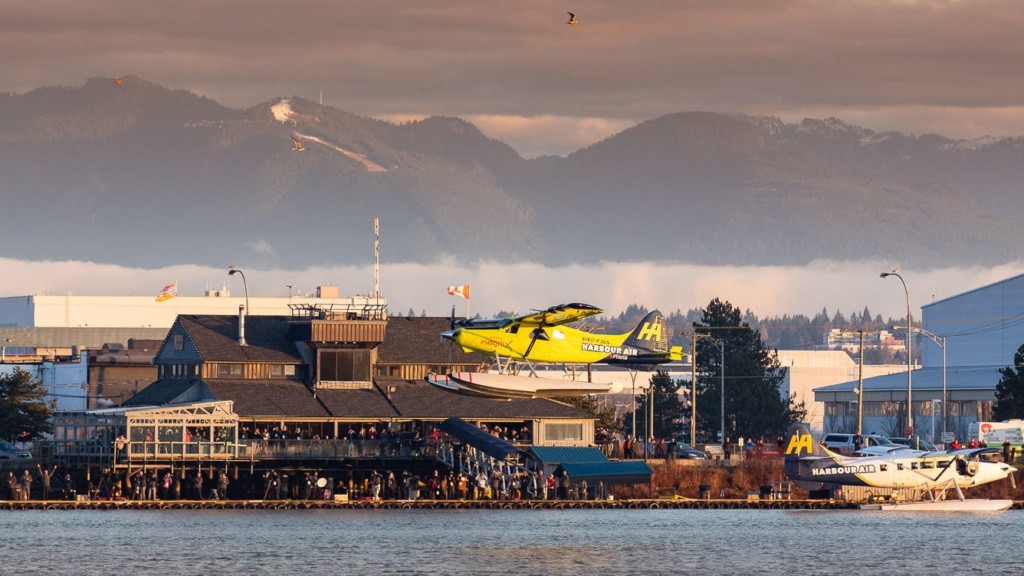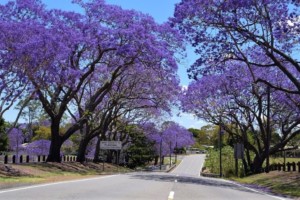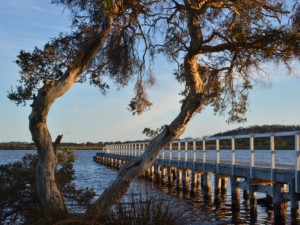Good news in tourism December 15 – 20, 2019

Welcome to The “Good Tourism” Blog’s summary of six days of good news in the world of travel & tourism. Published on Saturday this time — because “GT” is travelling on Sunday — to be ready on Monday, it’s the perfect start to a working week — or week off if that’s what you are doing. Whatever your circumstances, share the joy!
In no particular order:
Philippines’ oldest and largest corporate conglomerate is reportedly being resisted by the residents of a small town.
Good news? Yes, because community stakeholders are speaking up. And it could evolve into very good news for everyone, including the conglomerate, if the suits of Ayala Corp are willing to listen.
The Mayor of the Municipality of Sagada, James Pooten, said: “If we need tourism, it must be nature-based tourism that supports the development of small businesses for the benefit of all sectors in the community.”
Aviation
Canada’s Harbour Air, a small Vancouver-based airline, made history this month with the world’s first all-electric flight of a commercial aircraft. The flight was only four minutes — the Wright brothers’ first flights were less than a minute — but it was of a six-passenger DHC‑2 de Havilland Beaver seaplane modified to run on a 750-horsepower electric motor (see featured image above).

UK engineering company Rolls-Royce has unveiled a single-engine electric aircraft, which it hopes will become the world’s fastest all-electric plane. While not for passengers, the plane is part of the Accelerating the Electrification of Flight (ACCEL) initiative to make electric aviation a commercial reality.
USA’s Department of Energy’s (DOE) Advanced Research Projects Agency-Energy (ARPA‑E) has announced that US$55 million in funding will go to two projects to support the development of low-cost electric aviation engine technology.
DM&MO — marketing and management
High season too busy? Low season too quiet? It’s time to flatten out those curves. It’s time to get creative. Seattle, capital of Washington state, USA — the home of grunge music, Boeing, and ‘bucks coffee, among many other things — has Seattle Museum Month in February. Visitors who stay in participating hotels receive 50% off admission prices to more than 40 museums, art galleries, and cultural institutions. While February is the depths of winter, browsing galleries and collections tends to be an indoor activity. February also happens to coincide with the cheapest airfares.
Greece’s new 10-year strategic tourism plan to 2030 is based on “sustainable development, diversification of the tourism product, season expansion, the emergence of new destinations, the enhancement of the value added product, which will lead to salary raises for the sector’s workforce, and strengthening the country’s image in international markets” according to Tourism Minister Harry Theoharis.
Philippines’ Department of Tourism (DOT) is no longer just a glorified advertising agency under Tourism Secretary Bernadette Romulo Puyat. “When I entered the DOT [in May 2018], Boracay had just closed in April. Since we opened it, we have been rehabilitating other tourism destinations […] When you look at the DOT, it [was] more of the promotion of our sun and beach, but now we have focused more on rehabilitation and sustainability efforts, together with the DENR [Department of Environment and Natural Resources] and the DILG [Department of the Interior and Local Government].”
Barbados’ Ambassador to the Caribbean Community (CARICOM) and the Association of Caribbean States (ACS), David Comissiong, reckons his nation and the wider Caribbean region should embrace sustainable hotels and sustainable tourism. He said a sustainable tourism industry would focus on more than the traditional sea and sun. Such an industry would recognise that the entire island of Barbados, including its people, history, heritage, arts, and culture, was the product.
The new five-year tourism policy for Karnataka state in India will include niches, such as wellness tourism, adventure tourism, ecotourism, medical tourism, spiritual tourism, and cultural tourism. Tourism Minister CT Ravi hopes niches will “impact the multiplier effect through sections of society, from jobs to preserving heritage to improving infrastructure”.
Pilgrimages
Israel’s Tourism Minister Yariv Levin has called for extending the opening hours of the Church of the Holy Sepulchre to help shorten the queues of Christian pilgrims within and outside the church. Meanwhile, Archbishop Pierbattista Pizzaballa, the apostolic administrator of the Latin Patriarchate of Jerusalem, reportedly said that while the Madrid climate change conference was “unsuccessful”, it should not stop local and individual efforts. “As the number of pilgrims increases, the desire for green pilgrimages is also increasing.”
Tourism stakeholders in Tiruchirapalli, the fourth largest city in India’s Tamil Nadu state, are exploring the untapped potential for Christian, Hindu, and Muslim pilgrimages from domestic and international source markets.
Culture & heritage
The Royal Commission for AlUla hopes to transform the ancient city of Hegra, and the AlUla Valley in which it sits, into “a worldwide cultural and touristic destination”. A region the size of Belgium in Saudi Arabia, AlUla is “full of archaeological treasures from the Dadanite, Nabataean, Roman and Islamic civilisations, nestled amongst staggeringly beautiful desert landscapes”. Read all about it from this stunning website.
According to its Tourism Minister Kadakampally Surendran, India’s Kerala State government will come up with a new heritage tourism project linking important sites in and around the coastal town of Vadakara, including Lokanarkavu temple and Thazhe Angadi market.
When expecting visitors, one tends to tidy up. And so tourism is the reason given for revitalising the market square of Kildare, Ireland; to “upgrade it in a way that connects the town’s heritage assets”. Mayor Suzanne Doyle reckons Kildare can compete with “the Kilkennys and Killarneys of the tourism world”.
The Yorktown Landmarks Preservation Commission is developing an app that it hopes will help generate heritage tourism. Yorktown is in New York state, USA. Commission Chair Lynn Briggs said heritage or cultural tourism is the fourth largest industry in New York state.
Non-smoke industry! “Boasting a long list of tangible and intangible cultural heritages, the northern province of Bac Ninh [in Vietnam] has huge potential to develop its non-smoke industry”, including “green tourism […] based on nature and culture”.
Eco- & nature-based tourism
An estimated 83% of Earth’s population live under light-polluted skies. So if they want to see the stars they have to travel! “Astrotourism” or “dark sky tourism” is a thing.
Mountain gorilla populations in the Democratic Republic of Congo, Rwanda, and Uganda are on the rise. There are now at least 1,069 individuals living in the wild. And a carefully-managed ecotourism industry, such as this example, is credited with helping to support conservation efforts.
Since UNESCO declared Berbak-Sembilang National Park in South Sumatra, Indonesia a world biosphere reserve in 2018, tourism has become an urgent priority for local administrations keen to cash in. Fortunately there are those on the ground who recognise that the fishing villages in the area require waste management infrastructure and that the people need more time to prepare for the great opportunities.
A waterfall, a boat ride, a trek, and, most importantly, a village in Cambodia. These are elements of a tour through “one of the few places in the Kingdom that has remained untouched and unexplored”. The village collects 10,000 riel (US$ 2.50) per person plus 5,000 riel for sidetrips to the village cemetary. Guiding services and boat rental are more lucrative at US$ 15 for a guide and US$ 25 for a boat. All told it’s a decent, though wildly inconsistent, income for the villagers.
The presence of migratory and rare bird species wintering in and around Ashuradeh, Iran’s sole island in the Caspian Sea, is an excellent opportunity for tourism, according to experts. Apparently “birdwatcher tourists do not care about tourism infrastructure as much as other holidaymakers do”.
During a familiarisation tour of two new national parks, Ibanda-Kyerwa and Burigo-Chato, Tanzania’s Permanent Secretary of Natural Resources & Tourism Professor Adolf Mkenda reassured tour operators that proposed laws regulating the filming of wildlife by foreigners will be relaxed and simplified.
The Palancar and Colombia reefs have reopened. All reefs in the Cozumel Reefs National Marine Park in the Caribbean Sea off Mexico were closed to the public due to white band disease, which kills coral. El Cielo reef will remain closed until March 31. From April 2020 the reefs will be opened and closed intermittently.
Conservationists love responsible tourism. Nearly a million dollars’ worth of grants for Hudson River projects will “build on local conservation efforts and priorities by advancing new possibilities for nature-based tourism”, according to the Commissioner of the Department of Environmental Conservation in New York state, USA.
And businesses enjoy the benefits. Michelle Rotellini, boss of the Beckley Raleigh County Chamber of Commerce in West Virginia, USA, reckons the restoration of national parks is a top priority in order to reap the business benefits of the tourists they attract.
Odds & ends
Newsy bits that don’t easily fit into this week’s arbitrary clusters:
By 2021, up to 500 farmers will be involved in a “From City to Village” project in Azerbaijan. The goal is to develop agritourism and increase incomes in rural areas.
Earth’s cruising sector released its state-of-the-industry report some time ago. (You have probably seen the Cruise Lines International Association press release copied and pasted verbatim onto other industry media platforms. “GT” isn’t into that at all.) A CLIA slideshow presentation summarising the content of the report is available right here (PDF 13.8 MB; hosted offsite). What’s the good news? As one would expect from such a document from an industry association it is filled with positive buzzwords, which is nice.
Featured image: The successful flight of Harbour Air’s ePlane, a six-passenger DHC‑2 de Havilland Beaver magnified by a 750-horsepower (560 kW) magni500 propulsion system, took place on the Fraser River in Richmond, Vancouver, Canada, on December 10.
P.S. None of the items above have been fact-checked. Please comment below if you know there has been rubbish posted here, but be nice about it. The linked sources might get offended. (“GT” won’t). And there’s no need to harsh the vibe by being nasty.
P.P.S. It is “GT’s” policy to fully disclose sponsored content. If an item is not marked as sponsored or partner-related then it will have caught “GT’s” attention by some other more organic means. Partner with “GT”. You know you want to.





